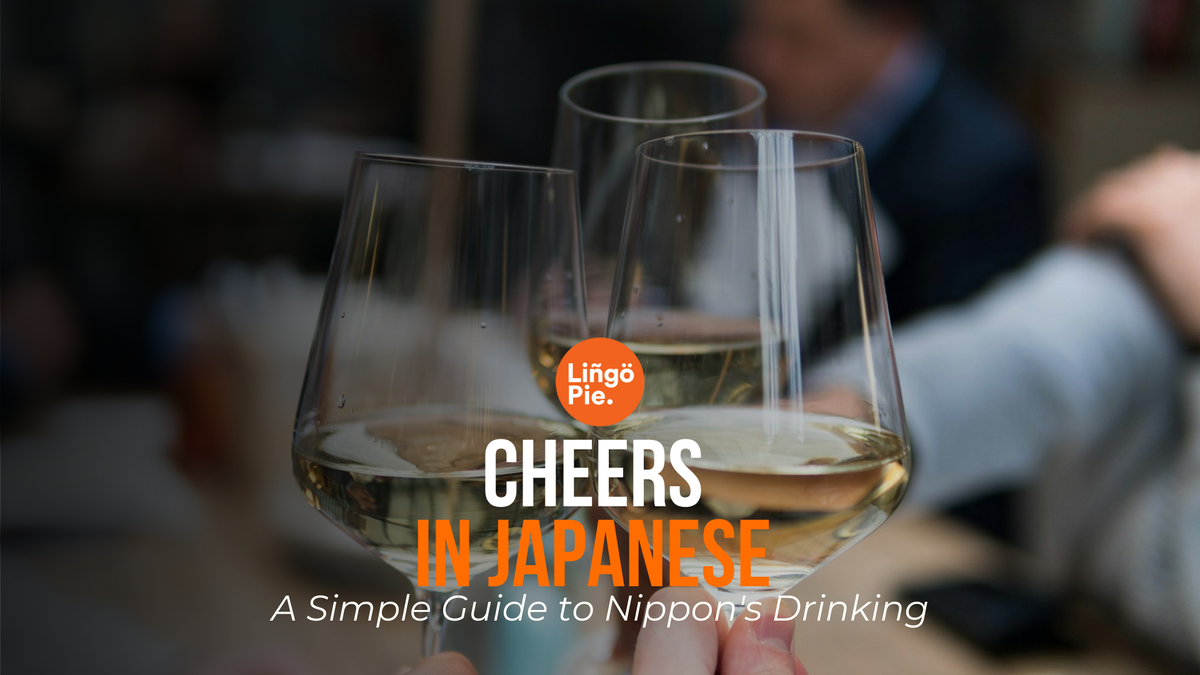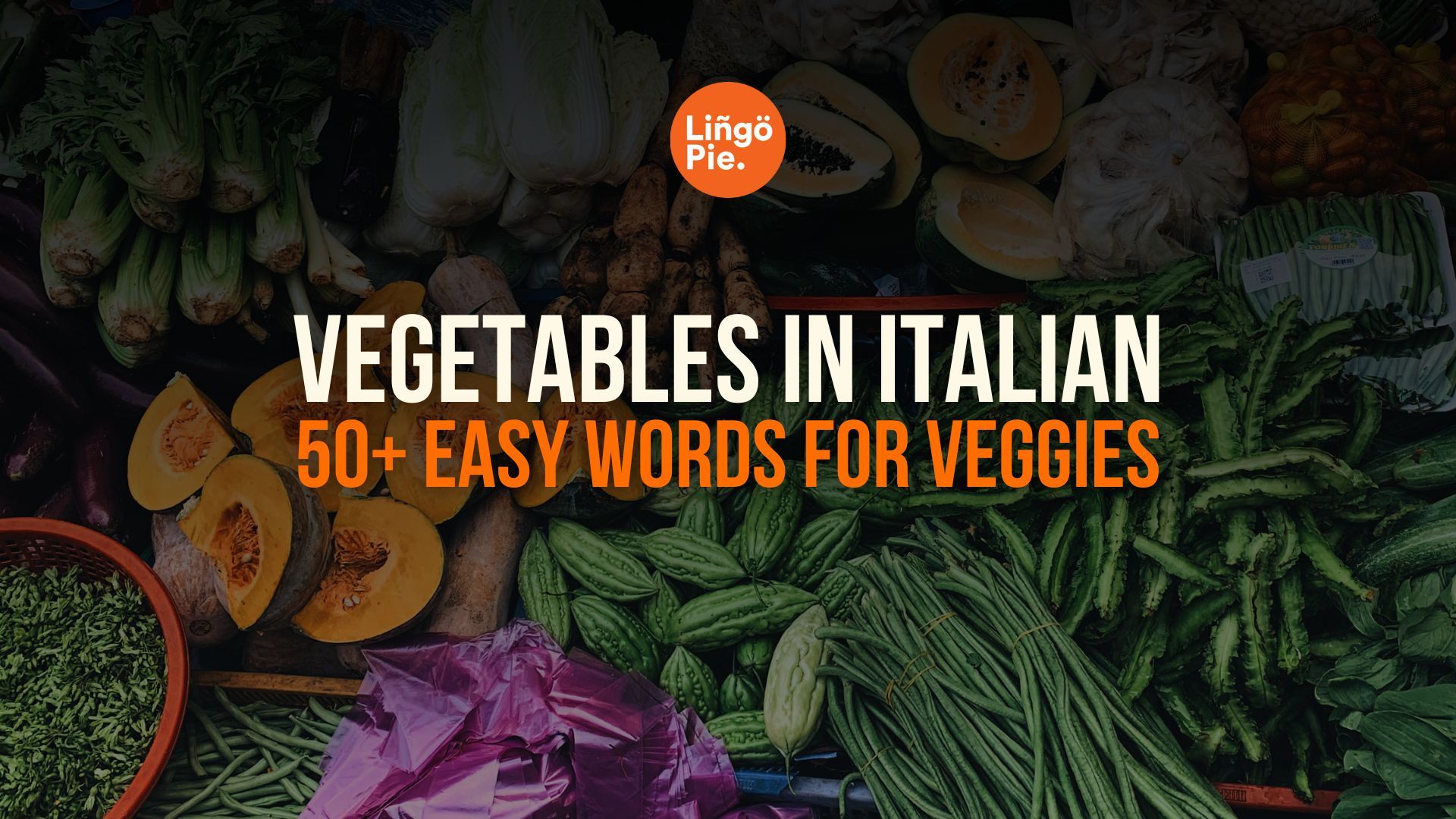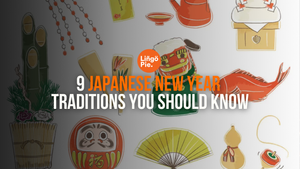After visiting Japan for the first time, I quickly learned there's much more to the culture than meets the eye. One phrase that really stuck with me was "社会に出る" (shakai ni deru), which means "entering society." It's a big milestone in Japan, symbolizing the start of adulthood and joining the workforce. With this comes the reality of 飲み会(nomikai)—drinking parties that are a huge part of social and professional life.
My friend told me how important it is to know how to say "cheers" in Japanese. The word 乾杯 (kanpai) is a gateway to bonding with locals, navigating social gatherings, and respecting Japanese drinking traditions.
In this article, I'll show you how to say "cheers" in Japanese, the meaning behind it, and the etiquette you should know when clinking glasses in Japan.じゃ、始めましょう!

The Common Way To Say "Cheers" In Japanese
In Japan, the most commonly used word for "cheers" is 乾杯 (kanpai). It's the go-to word at social gatherings, whether you're in a casual setting with friends or at a formal event like a wedding or company dinner. When someone says 乾杯 (kanpai), the drinking begins, and everyone lifts their glass, clinks it with others (if they can reach it), and then takes their first sip.
When And Where To Use "乾杯 (Kanpai)"
One of the interesting parts of Japanese drinking culture is the concept of nomunication—a blend of "nomu" (to drink) and "communication." It's the idea that people open up more and relax when sharing drinks, which can lead to deeper conversations and stronger relationships, especially in work settings. It's a unique way of bonding, and 乾杯 is what gets it all started.
Almost every gathering in Japan that involves drinks includes this word. It marks the official start of the drinking session in an izakaya (Japanese pub), at a formal dinner, or even at a workplace party. It's a bit like pressing "play" on the evening's festivities—no one touches their drink until 乾杯 has been declared.
It's important to wait for everyone to be ready before you shout "乾杯" and start drinking. Timing is crucial, especially at formal events. You wouldn't want to take a sip before the 乾杯 is called, as that might come across as impolite. So, keep an eye on the host or the person making the toast.
Alternative Phrases For "Cheers" In Japanese
While 乾杯is the most common way to say "cheers," I came across a couple of other phrases that are super interesting and fun to use in the right context.
- とりあえずビールで!(Toriaezu, biru de!)
This one made me smile because it basically means, "Let's start with beer!" It's an informal phrase often used when you're out with friends and just want to jump right into things. It captures that moment when everyone's ready to start, but they haven't even glanced at the menu yet—just get the beer flowing! - お疲れ様 (Otsukaresama)
This is more than just a "cheers" phrase. It's a way of acknowledging hard work, especially in a workplace setting. After a long day, when you're out with colleagues, you might say お疲れ様, as a kind of "thank you" for everyone's efforts before lifting your glass. It's a reminder of how much appreciation and politeness are woven into Japanese culture, even in something as simple as a toast.

Japanese Drinking Etiquette: Saying "乾杯 (Kanpai)" Is Not Enough
Now that you know how to say "cheers" in Japanese, let's dive into some drinking customs that come with it. In Japan, drinking etiquette is as important as the toast itself, and following these traditions shows respect for your fellow drinkers.
Pouring For Others
In Japan, it's considered polite to pour drinks for others rather than fill your own glass. If you notice someone's glass is getting empty, offer to refill it for them, and they'll likely return the favor. Just make sure your glass isn't full when someone else wants to pour for you—it's seen as a missed opportunity to show politeness.
The Hierarchy At The Table
If you're in a more formal setting, like a work dinner, seating order and who drinks first can be pretty important. Seniors or higher-ups are usually served first, and you'll often notice people being extra mindful of who's around them.
Holding The Glass With Two Hands
When you receive a drink from someone, especially if they're older or in a higher position, it's polite to hold your glass with both hands as a sign of respect. It's a small but meaningful gesture that reflects the importance of hierarchy in Japanese culture.
Refilling In Rounds
Drinking in Japan is often done in rounds. Once everyone's finished their glass, someone will likely pour the next round. It's a way of pacing the evening and ensuring that no one drinks alone. Remember to always wait for another 乾杯 before taking a sip!
Vocabulary Related To Japanese Drinking Culture
In this section, we’ll explore key vocabulary that will help you navigate the lively world of Japanese drinking culture, from common beverages to essential phrases.
FAQs About The Word "Cheers" In Japanese
In this section, we’ll tackle some of the most frequently asked questions about saying "cheers" in Japanese. From the meaning behind "乾杯(kanpai)" to the cultural customs surrounding it. Let’s dive into these common questions and uncover everything you need to know for your next toast!
1. What Does "乾杯 (Kanpai)" Mean In Japanese?
乾杯 (Kanpai) is the most common way of saying "cheers" in Japanese. It's used in both casual and formal settings to initiate a toast before drinking.
2. Is It Rude To Drink Before Saying "乾杯 (Kanpai)" In Japan?
Yes, in Japan, it's considered impolite to start drinking before the 乾杯 (Kanpai) has been called. You should wait for everyone to be ready, lift your glass when 乾杯 is said, and then take a sip after the toast. This small gesture shows respect and appreciation for the shared moment.
3. Are There Non-Alcoholic Options For Saying "乾杯 (Kanpai)" In Japan?
Absolutely! You don't need alcohol to participate in a 乾杯. Even if you're drinking tea, juice, or another non-alcoholic beverage, you can still join in the toast. The important part is the shared gesture, not what's in the glass.
Learn To Say More Than Cheers In Japanese With Lingopie!
To wrap things up, we've explored how to say "cheers" in Japanese, learned a few fun alternative phrases, and even touched on some important drinking etiquette in Japan. No matter where you are, knowing these expressions will help you fit in and have a great time.
If you're curious and want to dive deeper into Japanese culture and language, I recommend checking out Lingopie, a fantastic resource for learning Japanese through real TV shows and movies. It's a great way to pick up everyday phrases like 乾杯 (Kanpai) in action!
And if you'd like to learn even more, why not explore more of our articles on the Japanese language and customs? We're sure you'll always find something new to discover.






![6 Best Japanese Language Apps Worth Trying [TESTED]](/blog/content/images/size/w300/2025/12/best-apps-to-Learn-Japanese.jpeg)
![A Guide To Kansai-ben Dialect For Beginners In Japanese [2026]](/blog/content/images/size/w300/2025/03/Kansai-ben-dialect.jpg)

